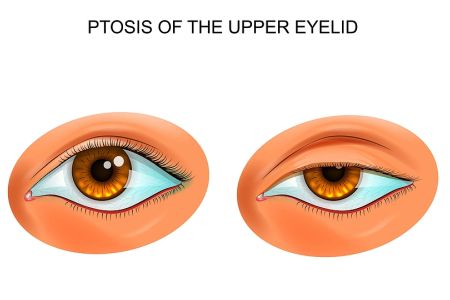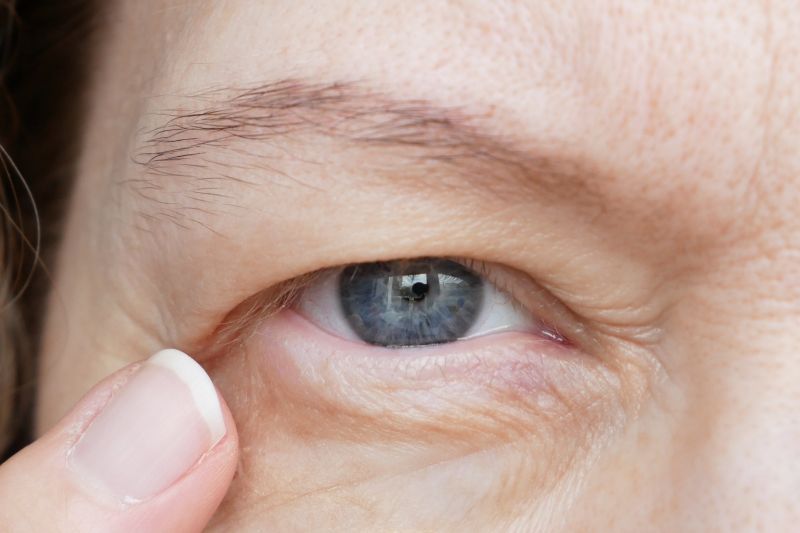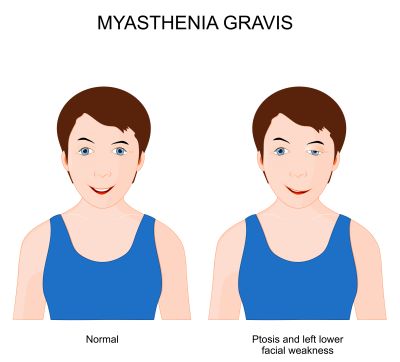Request A Consultation
Droopy Eyelid Repair
Sagging eyelid skin, also known as ptosis, can have a significant impact on a person’s facial aesthetics and expressions. A blepharoplasty with ptosis repair performed by a plastic surgeon who specializes in oculoplastic reconstructive and cosmetic surgery can help with droopy or poorly contoured eyelids. Board-certified plastic surgeon Dr. Azouz has extensive training and experience with oculoplastic surgery in Dallas, Texas.

Hooded Droopy Eyelids
As we age, the elasticity of our skin decreases, causing the delicate skin of our eyelids to lose firmness and resilience. This can cause excess skin to accumulate on the upper eyelids, giving them a heavy and drooping appearance. The sagging skin may extend to partially or completely obstruct the natural crease of the eyelid. This not only changes the natural contours of the eyes, but it can also cause functional difficulties by impairing peripheral vision. Drooping eyelids can obstruct your peripheral vision, interfering with daily activities such as driving and reading.
Droopy eyelids have an impact on more than just appearance and vision; they also influence how others perceive our emotions and intentions. Our eyes play an important role in conveying emotions such as happiness, surprise, and concern during social interactions. Excessive drooping of the eyelids can result in a perpetual expression of fatigue or sadness, regardless of the individual’s actual emotional state. This disparity between appearance and emotions can lead to misunderstandings and suppress effective communication.

Furthermore, eyelid ptosis can disrupt the overall harmony of the face. The eyes are a prominent feature that attracts attention and serves as a focal point in social interactions. When the upper eyelids are weighed down by sagging skin, the natural vibrancy of the eyes is obscured, detracting from overall facial attractiveness.
Droopy eyelid repair surgery not only restores a more youthful and rested appearance but also revitalizes the way we express ourselves and interact with the world. By removing excess skin, the eyes regain their openness and brightness, allowing emotions to be accurately conveyed and fostering a more positive and confident overall facial impression.
How Does Eyelid Ptosis Develop?
Eyelid ptosis, also known as upper eyelid drooping or sagging, can be caused by a variety of factors, including eye trauma. Trauma to the eye area, whether from an accident, injury, or surgery, can cause damage to the muscles and nerves that lift the eyelid. This can cause a noticeable asymmetry between the two eyes and impede natural eye movement. Furthermore, Botox injections, which are frequently used for cosmetic purposes, can sometimes result in unintended weakening of the muscles that control eyelid movement, leading to eyelid ptosis.
Eyelid ptosis can also be caused by neurological and muscular conditions. Myasthenia gravis, a neuromuscular disorder, can cause the muscles responsible for lifting the eyelid to weaken, causing it to droop. Similarly, oculomotor nerve damage or disorders can disrupt communication between the brain and the eyelid muscles, resulting in droopy eyelids.
Excessive and aggressive eyelid rubbing, which is common during allergies or irritations, can be harmful in the long run. Sagging eyelids can result from constant friction and pressure on the eyelids, which can stretch and weaken the supporting tissues.
The use of rigid contact lenses is another unanticipated cause of eyelid ptosis. Long-term use of these lenses, particularly if they are not properly fitted or worn for an extended period of time, can put pressure on the eyelids and the delicate surrounding tissues. This pressure can cause changes in the structure of the eyelids and contribute to eyelid drooping.

Candidates for Droopy Eyelid Surgery
Individuals who are candidates for droopy eyelid repair surgery typically include those who:
- Have drooping upper or lower eyelids that interfere with vision or appearance
- Do not have dry eyes or have dry eyes that are well controlled
- Have waited an appropriate time after lasik eye surgery
- Have realistic expectations for the surgery’s outcome
Benefits of Eyelid Ptosis Surgery
Undergoing droopy eyelid repair surgery with Dr. Azouz in Dallas offers numerous benefits:
- Youthful Appearance: Excess skin and fat are removed during the procedure, resulting in a more youthful and rested appearance
- Improved Vision: Corrected eyelids can improve peripheral vision, making daily activities and safety more enjoyable
- Enhanced Confidence: Restoring the natural beauty of your eyes can boost your confidence
- Long-Lasting Results: The surgery’s effects are long-lasting, resulting in long-term improvements

Ptosis Surgery in Dallas, TX
Droopy eyelid surgery, also known as blepharoplasty, is a customized procedure that restores a youthful and natural appearance to sagging eyelids. Dr. Azouz, a board-certified plastic surgeon, performs this outpatient surgery by making discreet incisions along the natural lines of the eyelids, resulting in camouflaged incision lines and minimal scarring. Excess skin, fat, and muscle tissue are carefully removed to improve both appearance and function. This precise method creates a balanced, refreshed appearance that improves the overall appearance of the eyes.
Anesthesia for Droopy Eyelid Surgery
Dr. Azouz uses both local anesthesia and twilight sedation. Local anesthesia is used to numb the surgical area, which can help control pain even after the procedure. Medications are given to patients during twilight sedation to help them relax and stay comfortable.
Risks of Surgery
While droopy eyelid repair surgery is generally safe, there are some risks to consider:
- Bleeding and infection
- Dry eyes or excessive tearing
- Temporary blurred or double vision
- Asymmetry or dissatisfaction with the results
- Scarring
During your consultation, Dr. Azouz will go over these risks with you to ensure you make an informed decision. Dr. Azouz will discuss ways to reduce risks such as ice and elevation.

Enhance Results with Combining Surgery
Dr. Azouz also provides the following additional procedures to improve the outcomes of droopy eyelid repair surgery:
- Brow Lift: Elevating sagging brows can help rejuvenate the upper face even more
- Facelift: Addressing overall facial aging can result in a more pleasing appearance
- Neck lift: Addressing both the upper face and the neck can result in a more harmonious and youthful overall appearance
- Nose job: Enhancing both the eyes and the nose can help create a more balanced and appealing profile.
What is the Cost of Droopy Eye lid surgery in Dallas?
The cost of a cosmetic blepharoplasty, a droopy eyelid surgery, can be highly variable. A consultation with Dr. Azouz in Dallas can be made both virtually and in person in order to determine the price of surgery, anesthesia, and operating room fees for a ptosis repair. Combination surgery is very common for ptosis repair, and the repair is often combined with other cosmetic surgery, which can reduce the costs of droopy eyelid surgery. During your consultation, Dr. Azouz will provide a customized quote for your desired goals and expectations.
Schedule a Consultation for Ptosis Surgery in Dallas
Droopy eyelid repair surgery in Dallas by Dr. Azouz allows you to regain your confidence and youthful appearance. This procedure can significantly improve your quality of life by addressing both aesthetic concerns and vision impairments. If you’re thinking about having your droopy eyelids repaired, schedule a consultation with board-certified plastic surgeon Dr. Azouz by calling (972) 702-8888 to discuss your options and begin your journey to revitalized, vibrant eyes.